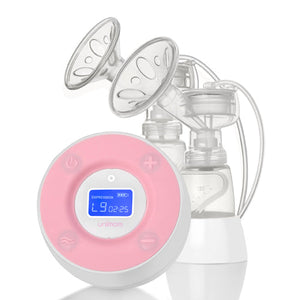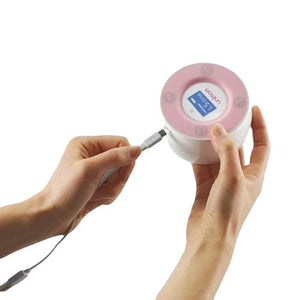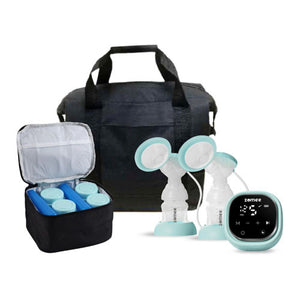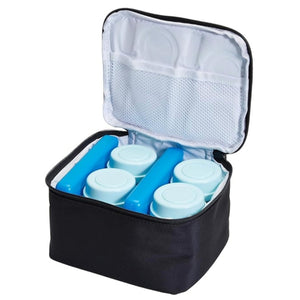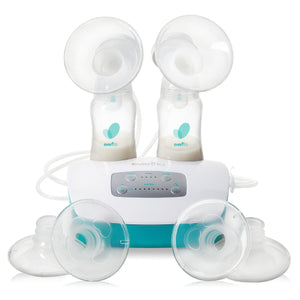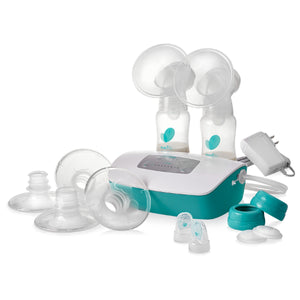Ensuring you use the correct flange size is essential for effective pumping, comfort, and milk flow. This guide explains how to measure breast pump flange size correctly, offers a breast pump flange size chart guide, and helps answer “how do I know my flange size for pumping.” We also share expert Moovkart flange sizing tips and accessories to optimize your experience. Whether you're a new mom or upgrading your kit, the right flange size makes all the difference.
Pumping breastmilk is an important part of many lactation journeys, and using the right flange size ensures comfort, efficiency, and healthy milk production. But how do you know your ideal size? With our step-by-step instructions and sizing chart, you’ll soon have a perfect fit tailored to your body.
At Moovkart, we believe every mother deserves a hassle-free, effective experience—providing top tips, sizing tools, and flange accessories that empower you every step of the way.
Why Flange Size Matters
The flange (breast shield) is what touches your breast and directs milk into the pump. Too small, and you may feel pinching or reduced flow; too big, and the flange may not center your nipple properly, causing irritation or clogged ducts.
Correct sizing supports optimal milk flow, comfortable pumping sessions, and prevents nipple soreness. It’s also essential for avoiding blocked ducts or mastitis during prolonged use—especially for working parents or those pumping regularly.
Step-by-Step: How to Measure Breast Pump Flange Size Correctly
- Clean and center your nipple: Wash your hands and ensure your nipple is centered in the tunnel of the flange.
- Measure the nipple diameter: Use a soft measuring tape or ruler inside the tunnel. Measure the diameter of the nipple (not the areola)—typically between 16–36 mm. This ensures accurate sizing.
- Add 2–3 mm: Add 2 mm to your nipple diameter to allow for movement and blood flow measurement. For example, a 20 mm nipple needs a 22 mm flange.
- Compare with the flange chart: Refer to a breast pump flange size chart guide—most brands offer sizes like 21, 24, 27 mm, etc.
- Test and adjust: Try the picked size for 5–10 minutes. Check for nipple rubbing or discomfort. If needed, adjust up or down 1–2 mm to fine‑tune the fit.
Breast Pump Flange Size Chart Guide
|
Flange Size (mm) |
Nipple Diameter Range |
Recommended Use |
|
17–19 mm |
15–17 mm |
Very small nipples |
|
21 mm |
18–20 mm |
Average size |
|
24 mm |
21–22 mm |
Slightly larger nipples |
|
27 mm |
23–24 mm |
Large nipples |
|
30 mm+ |
25 mm+ |
For suction comfort in wide nipples |
Always round to the nearest flange size available. If between sizes, users might try both 24 and 27 mm to see which gives better comfort and flow.
Common Flange Sizing Mistakes to Avoid
- Focusing on the breast, not the nipple: Measure the nipple only—it’s how the flange fits.
- Ignoring comfort during pumping: Many moms use a slightly different size for comfort during long sessions.
- Assuming one size works always: Flange sizing can change with time—pregnancy, hormone changes, weaning, etc. It’s normal to reassess your size periodically.
Moovkart Flange Sizing Tips and Accessories
- Sizing calculator & printable guide: Moovkart provides a sizing guide and printable ruler for precise measurements at home.
- Trial adapter kits: Try a kit with multiple flange sizes for testing before buying replacements.
- Soft silicone inserts: Great for trying a smaller size without purchasing a whole new flange.
- Anti-slip lining: Helps prevent the flange from sliding or shifting during pumping sessions.
Frequently Asked Questions (FAQs)
1. How do I measure breast pump flange size correctly?
Start by measuring your nipple in the middle while using a soft tape. Add 2–3 mm to allow movement space, then match it to a breast pump flange size chart guide. Adjust after a trial session.
2. Is there a universal method for “how do I know my flange size for pumping”?
Yes—center the nipple, measure its diameter, add a small allowance, and verify against a chart. Most flange kits include sizing instructions. Moovkart flange sizing tips and accessories simplify this experience with printable tools and guides.
3. What if my flange is pinching or slipping?
If you feel pressure at the base of the nipple, try increasing the size by 2 mm. If the flange slips, go down a size. You might also consider silicone insert adapters for better fit.
4. Should I measure both breasts—can they differ?
Yes. It’s common for one nipple to measure differently than the other. Many moms use different flange sizes for each breast for optimal comfort and efficiency.
5. How often should I check my flange size?
Every 6–8 weeks is a good rule, especially during changes in milk supply, pumping habits, or after weaning. Pregnancy changes and breast fullness fluid retention can affect sizing too.
6. Where can I find Moovkart flange sizing tips and accessories?
You can explore Moovkart flange sizing tips and accessories on our website’s Pump Accessories section—complete with printable guides, adapter kits, and silicone inserts designed for accurate resizing.
Conclusion
Measuring your breast pump flange size correctly is key to comfortable and effective pumping. By using our simple method, checking the breast pump flange size chart guide, and fine-tuning over time, you’ll optimize your milk flow and reduce nipple discomfort. And thanks to Moovkart flange sizing tips and accessories, you’re fully supported along your pumping journey.
Whether you’re a first-time mom or a seasoned pumper upgrading your kit, don’t underestimate a small—but mighty—tool like the correct flange size. It can make your pump time more efficient, less painful, and better suited to your body’s needs.
Ready to get it right? Visit Moovkart to download your printable sizing guide, explore adapter kits, or shop the correct flange size—all from the comfort of home.


